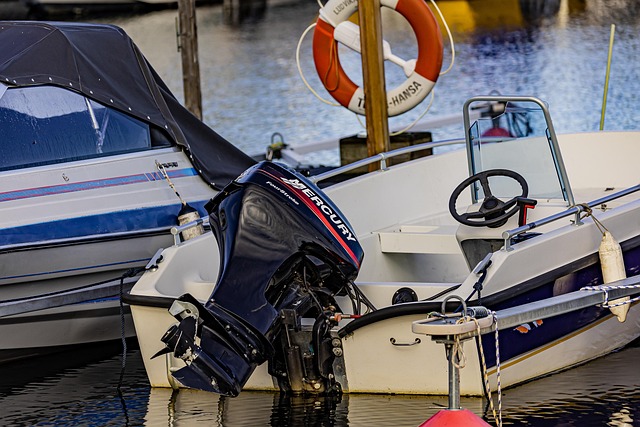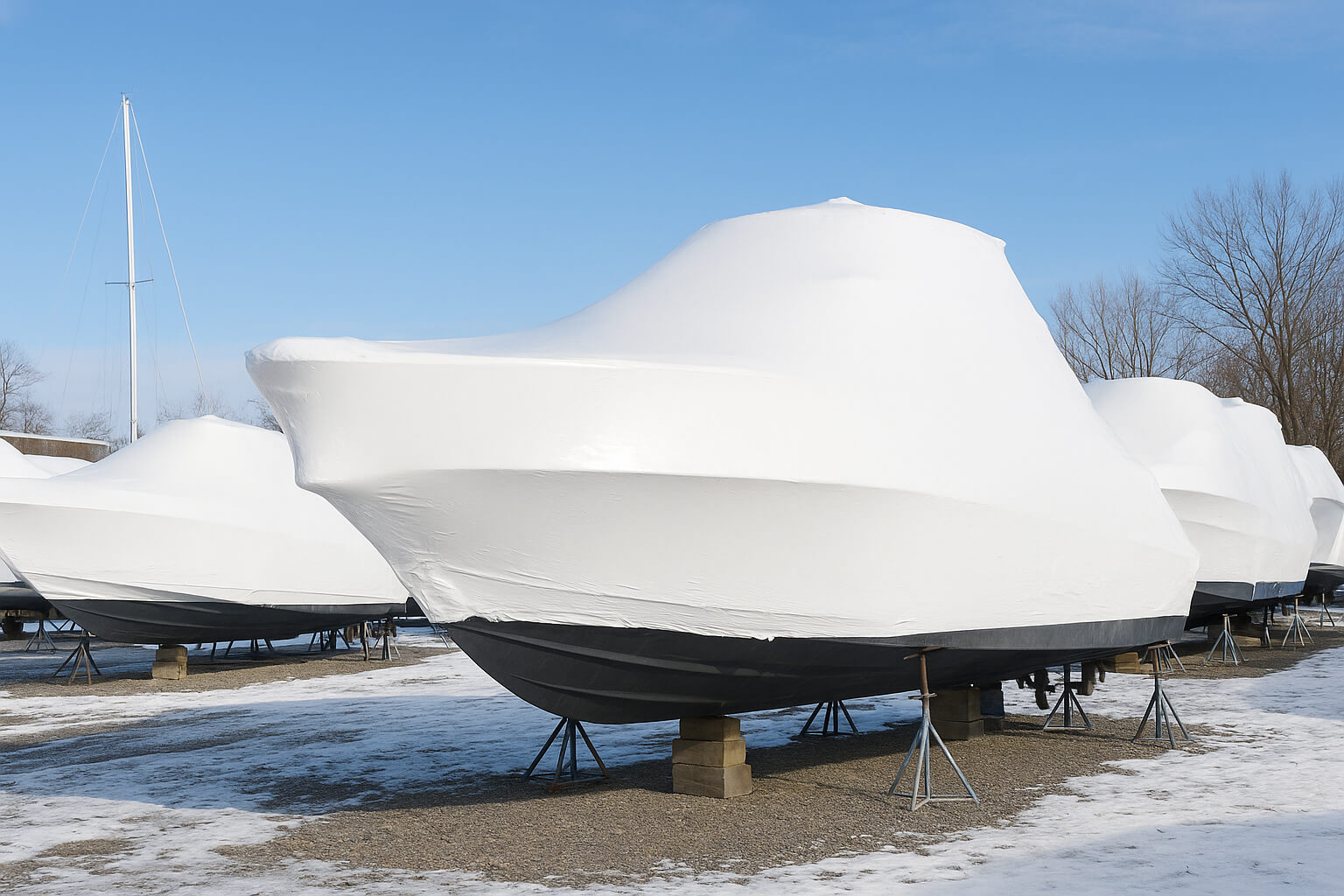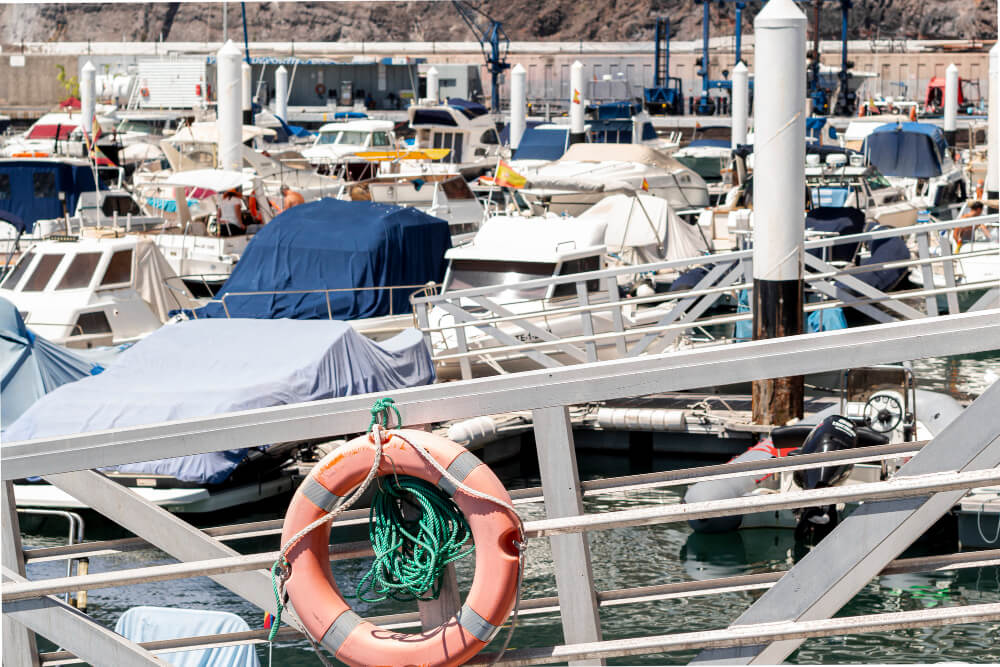As winter temperatures fall, properly storing your outboard motor is important to keep it in top shape for the next boating season. Cold temperatures, moisture, and long periods of inactivity can damage a motor that isn’t prepared for storage.
Whether you have a small portable outboard or a large high-horsepower motor, taking the right steps now will save you from costly repairs later.
Here’s a simple guide to winterizing your outboard motor the right way.
1. Flush the Engine Thoroughly
Salt, dirt, and debris can cause corrosion and clogs inside your engine if they’re left over the winter. To prevent this:
- Attach a garden hose to your motor’s flush port or use a set of motor muffs.
- Run fresh water through the cooling system for at least 10-15 minutes.
- If you boat in saltwater, use a salt-removal solution for an extra layer of protection.
2. Change the Engine Oil and Filter
Old oil can break down and lead to sludge buildup. Before storing your boat:
- Run the engine for a few minutes to warm up the oil (this makes draining easier).
- Drain the old oil and replace it with fresh oil recommended by your manufacturer.
- Change the oil filter to ensure everything stays clean.
3. Drain and Stabilize the Fuel System
Fuel left sitting for months can degrade and form varnish inside your fuel system, leading to clogs. Here’s how to prevent it:
- Add a marine-grade fuel stabilizer to your gas tank.
- Run the engine for a few minutes to ensure the treated fuel reaches the entire system.
- If possible, drain any remaining fuel from the carburetor or fuel injectors.
4. Fog the Engine to Prevent Rust
Fogging oil helps protect internal engine parts from corrosion during long storage periods. To apply it:
- Spray fogging oil into the air intake while the engine is running.
- Shut off the engine and remove the spark plugs.
- Spray a small amount of fogging oil into each cylinder, then turn the engine over manually a few times to distribute it evenly.
- Reinstall the spark plugs.
5. Inspect and Grease Moving Parts
Lubrication helps prevent rust and ensures smooth operation when you’re ready to be on the water again. Check and grease:
- Steering components
- Throttle and shift linkages
- Propeller shaft (remove the prop and check for fishing line wrapped around the shaft)
6. Remove and Store the Battery
If your boat has a battery, it’s best to remove and store it in a warm, dry location. To maintain battery health:
- Clean the battery terminals and apply a corrosion inhibitor.
- Charge the battery fully before storage.
- Store it on a trickle charger or charge it every few weeks to prevent it from going dead.
7. Protect the Exterior
Moisture and freezing temperatures can damage your outboard’s exterior. Here’s how to keep it in great shape:
- Rinse and dry the entire motor.
- Apply a light coat of anti-corrosion spray or marine wax.
- Use a breathable motor cover to prevent dust and moisture buildup.
8. Store in a Safe Location
Where you store your outboard motor matters. If possible:
- Store it upright in a dry, climate-controlled space.
- If removing it from the boat, keep it off the ground on a stand or a well-supported surface.
- Avoid leaving it outside exposed to debris and other harsh winter elements.
Get Your Outboard Motor Winterized the Right Way
Taking these steps will help keep your outboard motor in great condition. However, if you want to ensure everything is done right, professional outboard motor winterization services can save you time and protect your motor for the long run.
At OS Marine Maintenance & Boat Repair Services, we specialize in outboard motor winterization and full boat winterization services. Whether you need expert help with engine flushing, fuel stabilization, fogging, or battery maintenance, our team is here to ensure your boat stays protected through the winter.
Give us a call or request a quote to schedule your winterization service today.








